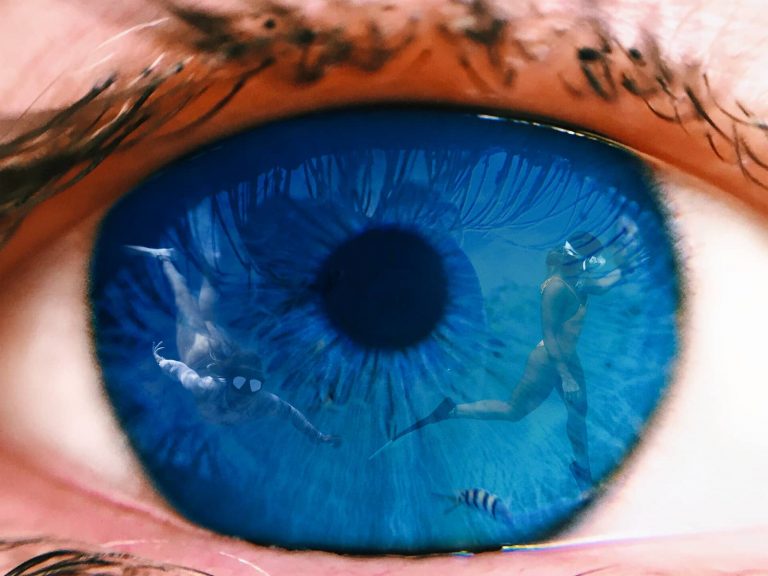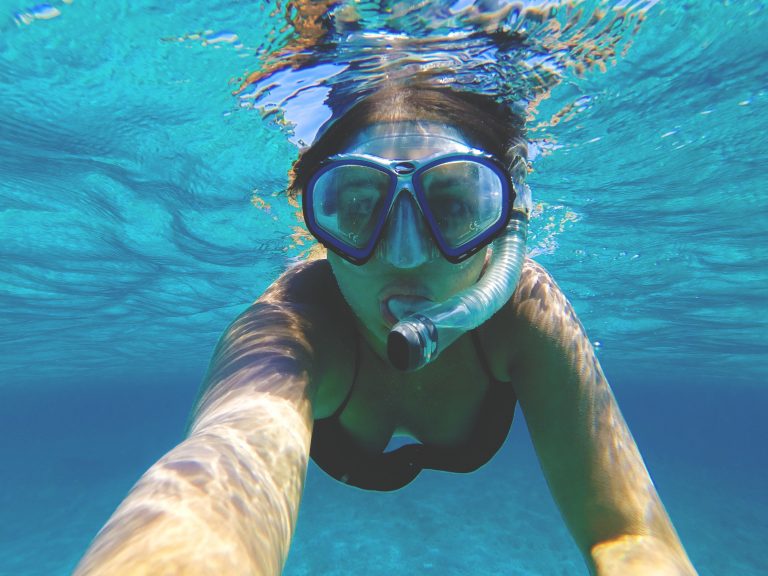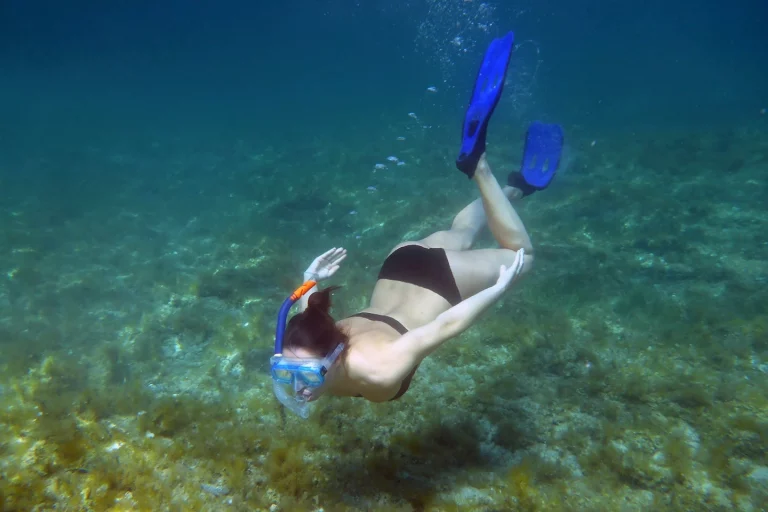How to snorkel underwater? 5 simple steps to dive confidently
Take the next step in snorkeling: learn how to snorkel underwater.
How to snorkel underwater? 5 simple steps to dive confidently
Let’s start by answering the basic question: Can you snorkel underwater?
Yes, you can snorkel underwater by keeping your breath steady, learning to clear the water pressure from your ears by pinching your nose and pulling your mouth shut, and using good snorkel equipment.
How to snorkel underwater
Snorkeling lets us get stunning top-down perspectives of the aquatic world and its creatures. There’s so much to see (even from the surface), but what if we want to look closely at everything around us? Is it feasible to snorkel underwater?
Snorkeling is underwater diving in which you wear a clear plastic mask and breathe through a tube. A snorkel is a device used for this purpose. You may lie face-down on the surface and observe the marine life without disturbing the ocean environment. Alternatively, you may go diving underwater and swim with the fish.
We’ll go over all of this in more depth in the section below, but let’s take a look at what snorkels are and how they function. We’ll also go through various types of snorkels, how to use them, and other equipment and abilities needed for snorkeling.
How exciting! We are approaching coral gardens. However, before we get to the fun stuff, let’s look at the five how-to steps you need to take to make diving underwater with a snorkel a reality and learn to snorkel underwater safely, successfully, and confidently.
Use the proper snorkel equipment
The most important piece of snorkeling equipment is the snorkel mask. Finding a good quality mask that fits well and does not leak is essential. You will also need a pair of fins, a wetsuit or rash guard, gloves, and booties to protect your hands and feet from heat loss.
A good-quality snorkel mask is essential for underwater snorkeling.
Traditional vs. Full-Face Snorkel Masks
The first step is to figure out which type of snorkel mask is ideal for snorkeling underwater. There are only two options: a traditional snorkel mask that covers your eyes and nose or a full-face snorkel mask that extends from your forehead to your chin. (For our guides and recommendations on snorkel masks for beginners, intermediates, and experts, check out Best Snorkel Masks for All Levels.)
Full-face snorkel masks are one of the more notable recent developments in snorkeling. The huge dome that covers your entire face gives you a wide field of vision and an integrated snorkel on top with a one-way valve to keep water out while allowing you to breathe.
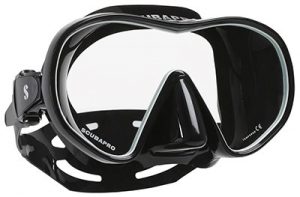
Even though it is technically feasible to snorkel underwater using a full-face snorkel mask, it isn’t simple. As you breathe in and out, the larger dome surrounding your face fills with air, giving you more buoyancy. This is lovely if you’re doing a leisurely surface snorkel since it makes floating considerably easier, but it makes it more difficult to go beneath the water’s surface.
Before diving underneath while wearing a full-face snorkel mask, force most of the air out of your mask with a long breath. However, since you don’t have any air in your lungs in this scenario, you can only dive underwater for a few seconds before needing to rise for fresh air.
On the other hand, traditional snorkels have a very small air intake by default and offer considerably less buoyancy. This makes it much easier to dive beneath the waves with a regular snorkel mask, so if we want to go that far, we’ll choose one of those.
Wet Snorkels vs. Dry Snorkels vs. Semi-Dry Snorkels
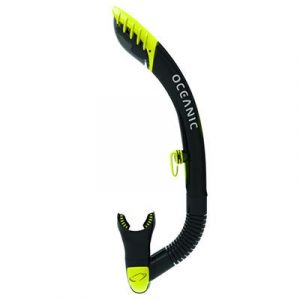
Now that we’ve decided on our mask type let’s talk about snorkels. After all, we need to breathe. For a long time, there was only one snorkel: an open tube connecting your mouth to the surface air (also known as a wet snorkel). However, in the game, we now
In general, I only really advocate a traditional wet snorkel — whether you’re diving underwater or not — to someone who has snorkeled for a long time and is very familiar with them. Dry snorkels and semi-dry snorkels are significantly superior in the majority of cases. (Check out our complete guide about Best Dry Snorkel in 2023)
Dries have the same mouth-to-air tube design as other snorkels, but they also include a one-way valve at the top of the snorkel to keep water out while still allowing you to breathe normally.
Dry snorkels are a fantastic development in snorkel technology (really!) and make snorkeling more accessible to novices.
Semi-dry snorkels function similarly to wet snorkels because they do not have anything between your mouth and the air you breathe. Still, they include a splash guard around the top of the snorkel to prevent water from entering your snorkel tube.
Although it isn’t as effective as a dry snorkel in keeping water out, it is superior to a wet snorkel. What we believe between a dry and semi-dry snorkel for underwater snorkeling depends on your skill level.
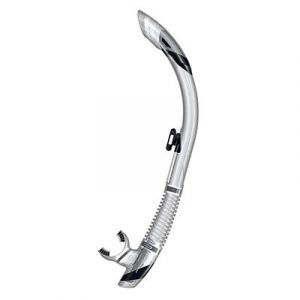
If you’re a snorkeler who’s new to it, we highly recommend a dry snorkel. Minimizing as much unwanted water as possible with the one-way valve is beneficial when you start. You can still certainly go diving underwater with these! The valve does retain a little air in the snorkel tube, but not enough to make you significantly heavier unless you’re trying to dive deep. In addition, as a novice, you should start with deeper dives.
On the other hand, a half-day snorkel may be your best bet for underwater snorkeling if you’re more of an expert or intermediate who’s comfortable diving in the water. The water shield that lines the snorkel tube and extends to the surface of the mask will offer some additional protection when snorkeling on top, and your snorkel tube will fill with water as you dive beneath the surface. (However, they’ll also suffice if you prefer dry snorkels.)
Beginners, on the other hand, should choose a dry snorkel. Experts and intermediates wanting to improve their diving skills underwater might consider a semi-dry snorkel.
Fins & Flippers
This one is simple. Fins or flippers are highly, highly advantageous while snorkeling underwater. They allow you to get to the desired depth faster, spend a little extra time there, and return to the surface for air more quickly.
Use a pair if you have one. If you don’t, that’s OK; all you need to do is work a little harder to push yourself down and back up again, which isn’t the end of the world. Check out our guide on picking the right set of snorkel fins for your skill level at The Best Snorkel Fins for Beginners, Advanced Snorkelers & Travelers.
Other Gear to Keep in Mind
The water’s temperature can differ depending on where you are, and diving down even 10 feet might alter the temperature drastically. If you’re a chill person or haven’t snorkeled the tropics in the first place, consider putting on a rash guard (or even a full wet suit) to add just a little extra warmth.
I’m not someone who likes to chill quickly, but when I know I’ll be spending a lot of time in the water, My boyfriend like the Volcom Men’s Lido Solid Short Sleeve Rashguard (Amazon) since it keeps my core warm without over-stimulating my arms. At the same time, I prefer to chill in the REKITA Women’s Long Sleeve Rashguard (Amazon), which has more protection on the arms and hands and is just really stylish.
Also, if I’m snorkeling underwater, I know it’ll be something great and memorable to experience. I recommend getting an underwater action camera like a GoPro if you enjoy taking photos or videos even slightly. It’s a lot of fun when it comes to snorkeling under the sea, and you can learn more about it at The Best Underwater Action Cameras for Snorkeling: GoPro & More.
And, if you could use a hand in selecting the ideal snorkeling gear for you, along with some items that you probably wouldn’t think about until it’s too late, check out What Snorkel Gear Should I Buy? The Full Guide to Getting Started Affordably.
Hold your breath and dive
Now that you have the proper snorkeling gear, it’s time to get in the water! Remember: the key to snorkeling is keeping your breath steady. If you can do that, you’ll be able to stay underwater for a significant time.
It may seem common sense to practice breath control before snorkelling, but some technique is involved.
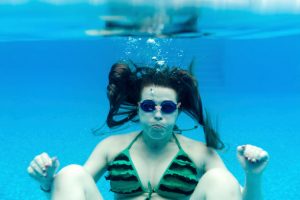
Snorkeling requires a lot of air, so before diving in, ensure you’re breathing deeply and steadily into your stomach (which draws in more air). This keeps your body calm, which prepares your lungs to take in more breaths. Breathe normally; rapid breathing increases tension in the body.
Before you dive into the water, take a deep breath, but just to around 80% or 90% of your lungs’ capacity. Taking in as much oxygen as possible might help you stay underwater for longer, but the extra pressure on your chest from the water’s depth can be unpleasant.
When you’re ready to dive, arch your back so your face is pointed downward, but your feet are still touching the water (if your legs are in the air, they won’t be able to kick against anything to assist you in diving). Make contact with the water with your feet and use it to your advantage by kicking your legs and pushing off the water to drive yourself forward and down until you can stand up straight without lifting your feet out of the water. Whoa, that’s some severe underwater snorkeling you’re doing!
Learn to clear the pressure from your ears
One of the most important things to know about snorkeling is how to clear the pressure from your ears. If you don’t do this, you’ll likely experience pain as you try to dive down deeper.
To clear the pressure, pinch your nose and blow gently as you ascend. This will help equalize the pressure and make it easier to pop your ears when you reach the surface. Exhale a little toward your nose to equalize the pressure between yourself and the water surrounding you.
Pinch your nose shut, cover your mouth, and breathe. This is called the Valsalva Maneuver. Until you know exactly how much force you’ll need to expel that breath (it’s still rather little), start on the milder end and work your way up. It’s a good idea to begin practicing this before going deeper underwater.
Return to the surface before you need air
One of the most important things to remember when snorkeling is to return to the surface before you need air. If you wait until you’re out of breath, you’ll likely panic and swim up too quickly, hurting your ears or even making you dizzy.
For one, this is necessary since it will generally take a few seconds to resurface, and you don’t want to cut it close when it comes to air.
Second, your body will become stressed if you constantly push yourself to the limit on air, making it more difficult to maintain your breath for long underwater until your body has time to calm down.
Clear your snorkel tube
When you come up for air, there’s often the water in your snorkel tube, even if you’re using a dry snorkel. Before breathing from the snorkel to the surface, tilt your head back and blow hard out of the tube. If you still have trouble breathing after the dry snorkel, remove it from your mouth and breathe normally.
Alternatively, take the snorkel out of your mouth at the surface to get a few normal breaths before blowing the water out of your snorkel tube.
Check out our Guide about How to clean your Snorkel gears.
How to Stay Safe When Snorkeling
The following are some snorkeling safety precautions that should go without saying: if you’re renting your snorkeling gear, you should inspect it thoroughly. You should conduct equipment checks regularly if you have your snorkeling mask and fins.
- Always travel with a friend and inform someone where you’re going and when you’ll be back. You’ll have someone to assist you and someone who will be aware that you are missing if something goes wrong.
- In some areas, you’ll need a surface marker so that nearby watercraft can find you. There are markers available that also function as floats and may carry other gear or food.
- Look around often to make sure you’re still on track. Wind, current, and sheer enjoyment might swiftly lead you to believe you’ve lost sight of your position; double-check that you have enough energy to return.
- Wear a life jacket or PFD if you are not used to being in the water. There is no need to be embarrassed; it will keep you safe and comfortable while also allowing you to save energy and relax.
- You’ll probably be snorkeling in hot weather, and while wearing just a swimsuit may seem appealing, the risk of sunburn is quite high. At the absolute least, wear a rash jacket, which is like a t-shirt designed for water usage. Get one that reaches up to
- Wear board shorts if you have them; a sunburned bottom is unpleasant! The ideal defense is a skin suit like a very thin wetsuit. Of course, you can slather yourself in sunscreen, but this is harmful to the sea, and it’s better to conceal oneself.
Want to learn about Snorkel: Lets Check this amazing and the Complete Guide to Snorkeling.
What to do when snorkeling underwater
My first piece of advice while snorkeling underwater: have fun! It’s a breathtaking experience to cruise through coral jungles or feeds sea turtles or enormous whale sharks. Take it all in.
My second and most important snorkeling rule is to avoid touching anything. That includes, well, pretty much everything. We’re visiting aliens in their underwater realm, so we should act as good temporary residents.
Corals are becoming increasingly delicate, and they can shatter very quickly (which takes a long time to regenerate if it does break) and may cause an infection if you cut yourself while they’re close. Make sure there’s plenty of distance between you and them. If you come into touch with coral, remove yourself from the water and clean the wound as soon as possible.
Next, the sight of marine life is always spectacular, and we want to be sure it’s treated nicely. Any creatures you see should be greeted with a little bit of space. Animals like sea turtles, dolphins, and manatees have been known to abandon their curiosity if you’re cool and courteous with them. But, of course, be cautious with your hands. It is the only good form that helps maintain the animals’ health (for example, oils in our skin may degrade the water-resistant coating on the skins of many sea mammals).
Frequently Asked Questions
How does a snorkel work underwater?
Modern dry snorkels employ cutting-edge technology and are light and efficient. When the tube is above water, a plastic cover over the top of the snorkel prevents water from entering it. When diving below the surface, a mechanism closes the tube to prevent water from entering. With a deep breath, you can purge any unexpected water from your tube with purge valves, allowing you to breathe freely again.
How do snorkel masks work?
Snorkel masks have a sealed mouth and nose section. A breathing chamber is also included. Exhaled air is channeled via side tubes rather than through the valve. It’s a seal that keeps you from breathing on your own air after removing the glass.
Silicone frames provide a waterproof seal over the entire face, from chin to forehead. The water stop ensures that no water can get into the mask as soon as your snorkel is submerged.
Can you breathe underwater with a snorkel?
Breathing through the snorkel tube is still required when using a regular snorkel mask. The snorkel tube is in your mouth, which remains above the waterline while you look at the reefs through shallow seas.
With a full-face snorkel mask that covers your face, you can breathe through your nose and mouth. Rather than connecting to the top of the mask, a tube still leads to it. Thanks to a dry-top anti-leak seal, water won’t get into your mask.
How to use a snorkel?
Make sure your mask and snorkel are comfy – an adjustable strap will ensure a good fit without leaking. The mask should seal tightly around your eyes and nose. Face down on the water with your face flat. Bite down gently on the snorkel’s mouthpiece, letting your lips close around it and keeping it in place. Take deep baby breaths without panicking; you’ll hear your breathing through the snorkel barrel; get into a rhythm.
If you snorkel and your mask fills with water, hold your breath and submerge the end of the snorkel by dipping your head underwater. After resurfacing, expel air through your mouth to drive water out of the snorkel barrel. A second powerful breath can remove any extra moisture.
If the water level is too high and you don’t have enough, airlift your head out of the water and breath with the mouthpiece.
Do you need to know how to swim to snorkel?
You’ll need basic swimming skills if you want to go underwater instead of staying on the surface. Fins enable rapid forward movement without interruption, and holding your arms close to your sides will aid in reducing any drag.
The best snorkeling technique will propel you ahead with downward strokes. Swimming at a constant speed without splashing will conserve energy. And, to avoid frightening the fish and annoying other snorkellers, don’t splash around too much.
Snorkeling, unlike freediving, takes place on the surface. Although both activities utilize similar face masks that obstruct the nose, snorkeling allows you to stay afloat and appreciate aquatic life near the surface.
Because freediving is a specialized sport, you will need special training to learn how to hold your breathing and feel at ease while beneath the surface without the assistance of a tube or scuba tank. At some time or another, most snorkellers try freediving as it is a more natural approach to swimming with fish and admiring corals than scuba diving.
Conclusion about How to Snorkel underwater
Snorkeling is a breathtaking experience from the surface, but when you add underwater snorkeling, it becomes something more remarkable.
Follow the abovementioned techniques and use the correct equipment (such as a basic snorkel mask coupled with a dry snorkel for beginners or a semi-dry snorkel for more experienced swimmers). You’ll be able to add this exciting new aspect to your snorkeling repertoire fast. As a beginner, remember that you must start small/shallow and gradually increase as you develop your abilities. However, it will soon become second nature to you with a little effort. Good luck!



